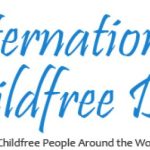For my annual Childfree Trending piece, this year I want to focus on one of the leading trends I have observed in 2022: a notable increase in childfree people as a collective being referred to as “the childfree movement.” So, for 2022, the fifth year of Childfree Trending, I want to take a general look at where we are as a social movement. Established sociology theories of social movements include a four-stage life cycle model. Let’s briefly look at each stage through the childfree window.
Emergence
Emergence is the first stage of a social movement. In this stage, there is dissatisfaction with a social condition or policy, and people are putting it out there. During this stage, media commonly increases on the situation or issue. Over the last twenty plus years, the rise in media attention on childfree topics and people has surely been the case! The huge increase in all types of media has been nothing short of amazing. Then add to it the surge of other forms in the digital sphere, from blogs and forums to social media platforms and sites that address misperceptions and treatment of childfree people and build childfree community.
Coalescence
In the next stage, the Coalescence stage, the discontent becomes more focused and organized. It goes beyond a group of discontented people to one that mobilizes to become more strategic and develop plans of action. While the efforts of the childfree collective are supporting the path to its normalization and strengthening as a community, we have yet to see more formal organization to create types of action.
However, we are seeing sprouts of this. For example, in 2022, the second annual Childfree Convention showcased sessions with speakers from a variety of countries discussing a range of childfree-related topics. On one hand, the Childfree Convention exemplifies an organized effort to build childfree community, and a global one at that. Future conventions are ripe to become a platform for focusing on strategic ways for childfree people to organize in areas we would like to see tangible change.
The new organization, New Legacy Institute (NLI), a social justice advocacy institute exemplifies a Coalescence stage effort. In addition to childfree people, it seeks to bring together the larger cohort of people without children to “address the social and policy inequities” faced by them. Founder Christine Erickson states its mission is “to generate constructive change in cultural, organizational, and institutional policies that exhibit biases against people without children.” NLI initiatives seek the equitable treatment of those with no children in “workplaces and public institutions, supported by public policy, and accurately reflected in media and cultural narratives.”
Bureaucratization
The next phase is the Bureaucratization stage of the social movement life cycle. In this phase, we see an increasing number of formal organizations, e.g., NGOs, and coalitions form, as the goals of the collective become more structured. When the childfree movement transitions to this stage we will see more organizations with formal campaigns and coalitions to eliminate things like inequitable workplace policies that favor those who are parents and legislative policies that give tax advantages to people with children. We would also potentially see more formalized campaigns to address needed changes regarding pronatalist issues in the media, entertainment industy, healthcare (e.g., sterilization denial), and school curricula.
Decline
Stage four, the Decline stage, can occur when the movement has achieved its goals and there is no reason to continue, which in the case of the childfree movement would mean the attainment of normalization and mainstream acceptance of the childfree choice, and reflected as such, socially, culturally, and through policy. The Decline state can also mean the failure of a movement, but that is not going to happen with the childfree movement!
On Other Channels
Briefly on other channels, this year we have seen more out there that attacks pronatalism. This of course benefits seeing through the stereotypes, negative judgments and untruths about the childfree choice and those who make it. On other upsides, as in past Childfree Trending pieces, this year we have seen even more global exposure in the media. There also continues to be more childfree voices than ever creating great content, podcasts, and engaged in efforts to strengthen the global childfree community.
On the downside, as in previous Childfree Trending pieces, the inconsistent language usage of childfree, child free, childfree, childfree by choice, and childless frustratingly remains. Algorithmic strategy may ultimately drive this, but it does not help the understanding of those who do not have children by choice, and all the other ways in which people can end up not becoming parents.
And on a mixed channel, as we hit eight billion people this year and continue to see the climate crisis deepen, we have seen more discussion and highlighting of people choosing not to have children. While it is for a sad reason, it has been a way for the childfree choice to get more coverage and publicity.
With 2022 coming to a close, as I look back at my 20+ years of work as a childfree researcher, writer, and activist, I continue to feel optimistic about where this collective effort for social and cultural change is headed. May we continue to strengthen as a community and progress as a social movement in 2023!






Nice to see these milestones, Laura! I have been seeing progress too and recently published a piece on The Breadwinner’s Dilemma, noting the trend of female breadwinners choosing less or no children due to economic concerns.
Thank you, Laura! Please share the link to your piece in The Breadwinner’s Dilemma! Economic concerns sure can be a reason in people’s decision-making process re kids; interesting to learn more about this from the female breadwinner angle : )